
For the first time in London for 70 years, the National Gallery is displaying major Impressionist and Post-Impressionist masterworks from the Courtauld Gallery, purchased in the 1920s by Samuel Courtauld (1876–1947). These are shown alongside paintings from the National Gallery’s own collection which the businessman and philanthropist financed and helped acquire.
Courtauld Impressionists: From Manet to Cézanne is on from 17 September 2018 to 20 January 2019.
Ernst Vegelin van Claerbergen, Head of the Courtauld Gallery, said, “Don’t get too used to these paintings hanging here!”
This exhibition is only possible because of the Courtauld Gallery closure. The Gallery is undergoing a two-year major multi-million-pound transformation project called Courtauld Connects. It is the biggest development programme since The Courtauld Institute of Art moved to Somerset House in 1989 and will enable The Courtauld to improve teaching and research facilities, enhance the Gallery and widen and extend its reach locally, nationally and internationally.
Lots of regional loans of Courtauld masterpieces are taking place during the closure, and, from next year, there will be a permanent room at the National Gallery for a rotating display of Courtauld Gallery paintings.
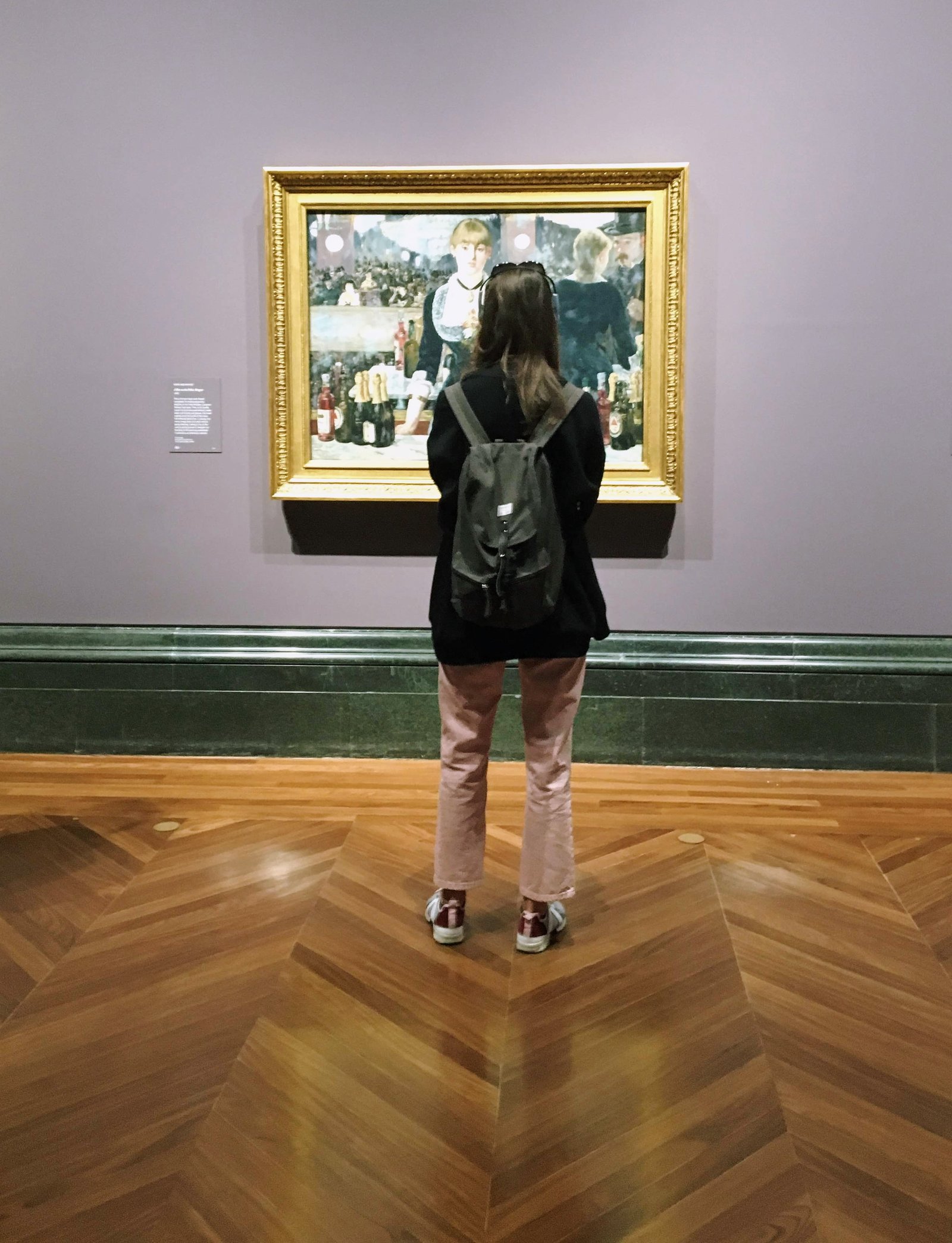
Born in England of Huguenot descent, Samuel Courtauld (1876–1947) was an English industrialist who is best remembered as an art collector. He expanded his family’s silk business in Essex into a vast multinational enterprise.
The Courtauld family have strong connections to my hometown of Braintree in Essex. Their family textile business was one of the greatest industrial stories of the 19th century and their legacy there includes a school, hospital, the town hall and streets named after them (I lived on one of them!)
Courtauld’s taste had been shaped by childhood trips to the National Gallery and travels to museums, galleries and collections on the Continent. He became more interested in art after seeing the Hugh Lane collection on exhibition at the Tate Gallery in 1917. And two exhibitions of French Impressionist paintings in London in the late 1910s and 1920s had a profound impact on Courtauld.
However, his career as a collector started in 1922 following an exhibition of French art at the Burlington Fine Arts Club. On seeing a painting by Cézanne, Courtauld recalled, ‘At that moment I felt the magic, and I have felt it in Cézanne’s work ever since.’ He believed that ‘unfettered imagination, human emotion, and spiritual aspiration go into the creation of all great works, and a share of the same qualities is needed for the reading of them.’
Courtauld was one of the first collectors to display an interest in French Impressionist and Post-Impressionist paintings. He started collecting more seriously in the early 1920s after he became chairman of his family firm, and his wealth allowed him to buy art on a large scale.
In 1922 he and his wife Elizabeth made the first purchases of modern paintings for their private collection that eventually grew to more than seventy works. While these works, which today form the core of the Courtauld Gallery’s holdings of French art, are now much-loved, they were frowned upon in Britain at the time.
When in 1923 Courtauld started to fund and shape the collection of Impressionist and Post-Impressionist works that are now at the National Gallery, he transformed the representation of modern French art in the UK.
The core elements of his collection were accumulated between 1926 and 1930 including masterpieces by Vincent van Gogh (Self-Portrait with Bandaged Ear), Édouard Manet (A Bar at the Folies-Bergère), Paul Cézanne (Montagne Sainte-Victoire) and Pierre-Auguste Renoir (La Loge).
His enthusiasm dwindled somewhat following the death of his wife Elizabeth (known as Lil) in 1931. He founded the Courtauld Institute of Art in London in 1932 and, after a series of gifts during the 1930s, bequeathed his collection to it upon his death.
Samuel Courtauld refused all public honours. He simply felt art was essential for a nation’s happiness.
Samuel’s younger brother, Stephen Courtauld (1883–1967), was also an arts patron and is remembered for his work on restoring Eltham Palace.

This is a three-room exhibition in three grand galleries with lilac walls and high ornate ceilings.
In the first room it’s Daumier, Degas, Manet and Monet; in the second room Pissarro, Seurat, Renoir and Toulouse-Lautrec; and in the final room there’s Cézanne, Gauguin, Bonnard and Van Gogh.
The final room also has a copy of Samuel Courtauld’s catalogue of French paintings compiled in 1934. He commissioned this three years after his wife died. About twenty copies were made, reserved for friends, libraries and museums.
Black and white photos of his home are on the back of the artist information boards showing some of the paintings in the exhibition on display in his London home (called Home House).
This exhibition of over forty works is centred around the loan of 26 masterpieces from the Courtauld Gallery.
With the largest number of works from Courtauld’s private collection ever to be seen at the National Gallery, Courtauld Impressionists: From Manet to Cézanne traces the development of modern French painting from the 1860s to the turn of the 20th century.
As well as having sections devoted to each artist, the exhibition also focuses on the vision, taste and motivation of Courtauld as he shaped two collections: one for his and his wife’s own enjoyment (which hung in his London home: Home House), and the other for the nation, with equal tenacity and dedication.
The Courtauld Fund of £50,000 was set up in 1923 by Courtauld himself for the acquisition of modern French paintings and the works that were purchased now form the core of the National Gallery’s post-1800 collection. They include Renoir’s At the Theatre (La Première Sortie) (1876–7); as well as Seurat’s Bathers at Asnières (1884), Cézanne’s Self Portrait (about 1880–1) and Van Gogh’s A Wheatfield with Cypresses (1889) which were the first paintings by these three artists to enter a British public collection.
Shunned by the establishment, such works were largely absent from museums and public galleries in Britain but, thanks to Courtauld, within four years some 20 masterpieces were made accessible to all.
Honoré-Victorin Daumier (1808–1879) was the earliest 19th-century French artist to feature in Samuel Courtauld’s collection. Active a generation before Manet, Daumier’s career spanned five decades, four political regimes and various revolutions and wars. A caricaturist, his witty observations of life and people stand out for their sharp social and political commentary.


Hilaire-Germain-Edgar Degas (1834–1917) was a founding member of the Impressionist group. He exhibited in all but one of their shows, sharing their interest in everyday city life. However, Degas had received traditional academic training that set him apart from his Impressionist friends. And, because he was independently wealthy, he could follow his own path.
As a painter of figures whose work relied on rigorous drawing, Degas was the first of the Impressionists to enjoy recognition and success in Britain. Samuel Courtauld, for instance, was well aware of his work long before he began collecting it. In the 1920s Courtauld purchased five works by Degas for his private collection, buying three more for the nation.




Édouard Manet (1832–1883) was one of the most controversial artists of his time. He was inspired by great painters from the past, including Titian and Velázquez, but at the same time his work was radically different to that of his immediate predecessors.
Although he never exhibited with the Impressionists, Manet was the unofficial leader of this group of painters.
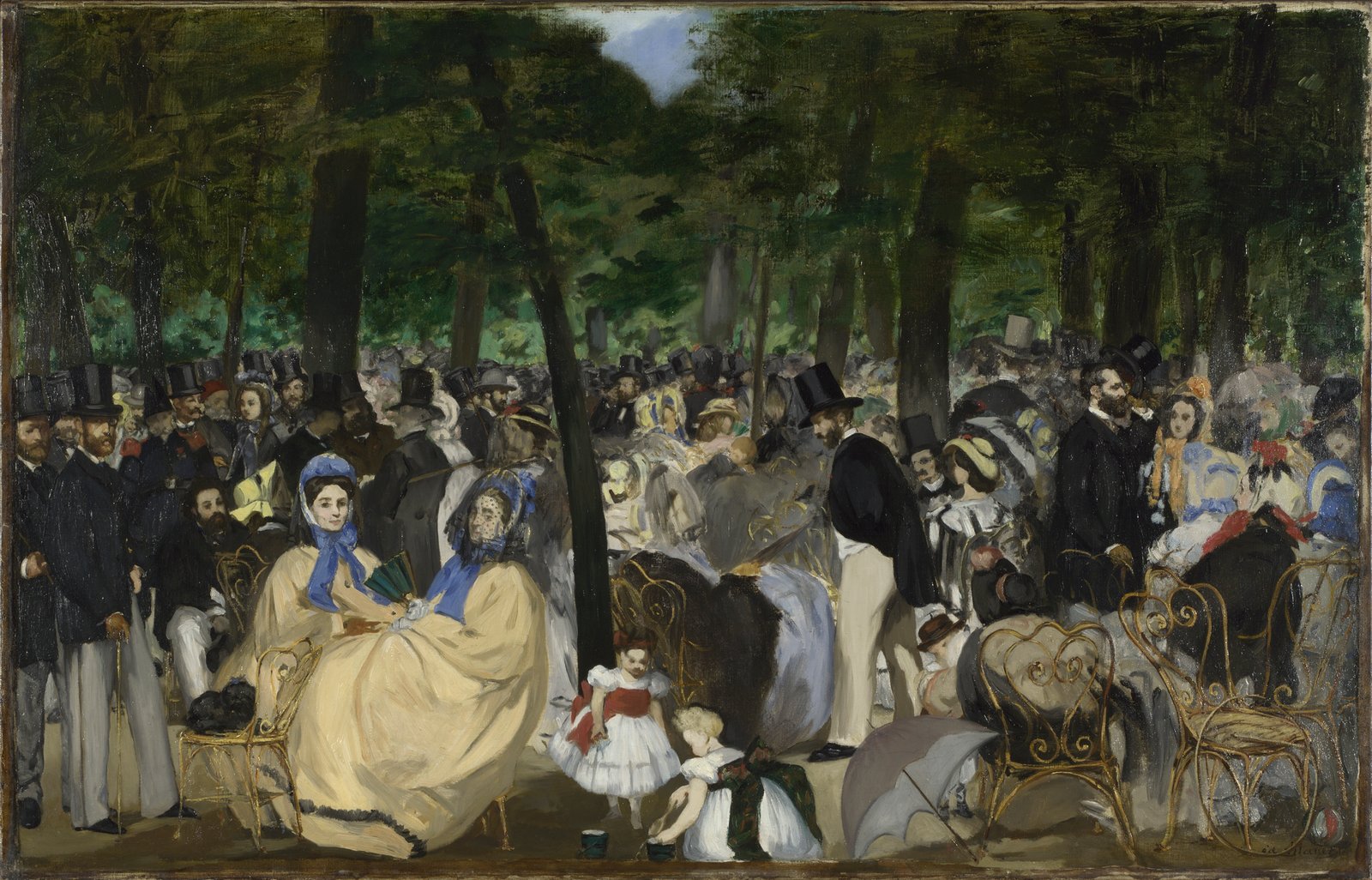

Claude Monet (1840–1926) was central to the Impressionist movement. He spent much of his life painting his immediate surroundings – the Normandy coast.
From 1874 Monet and his friends, including Pissarro and Degas, showed their work independently of the official Salon. This marked the beginning of Impressionism. The name derives from criticism of one of Monet’s paintings, scorned for its loose handling and sketchy appearance.
In the 1920s and ’30s Samuel Courtauld bought four works by Monet for his private collection, all from the height of the painter’s Impressionist period. He seemed less attracted to Monet’s later work, which focused on observing and representing his garden, and paved the way for 20th-century Modernism.


Camille Pissarro (1830–1903) was a founding member of the Impressionists. He showed great commitment to the group’s principles, striving to maintain its cohesion and exhibiting in all their shows. Taught informally by Corot, who told him to paint from nature, Pissarro was older than his peers and remained their loyal, generous supporter all his life, despite serious financial difficulties.
In the 1870s, Pissarro worked alongside Cézanne, and subsequently acted as a mentor to younger painters including Gauguin. Ten years later he also championed Seurat, who pioneered a new technique – pointillism – based on the use of countless tiny dots of colour. Although Pissarro was already in his mid-fifties, he soon adopted this style for his own work.
In the 1880s and ’90s, Pissarro turned from the countryside to the city for inspiration. The pictures by Pissarro that Courtauld selected were all town scenes.

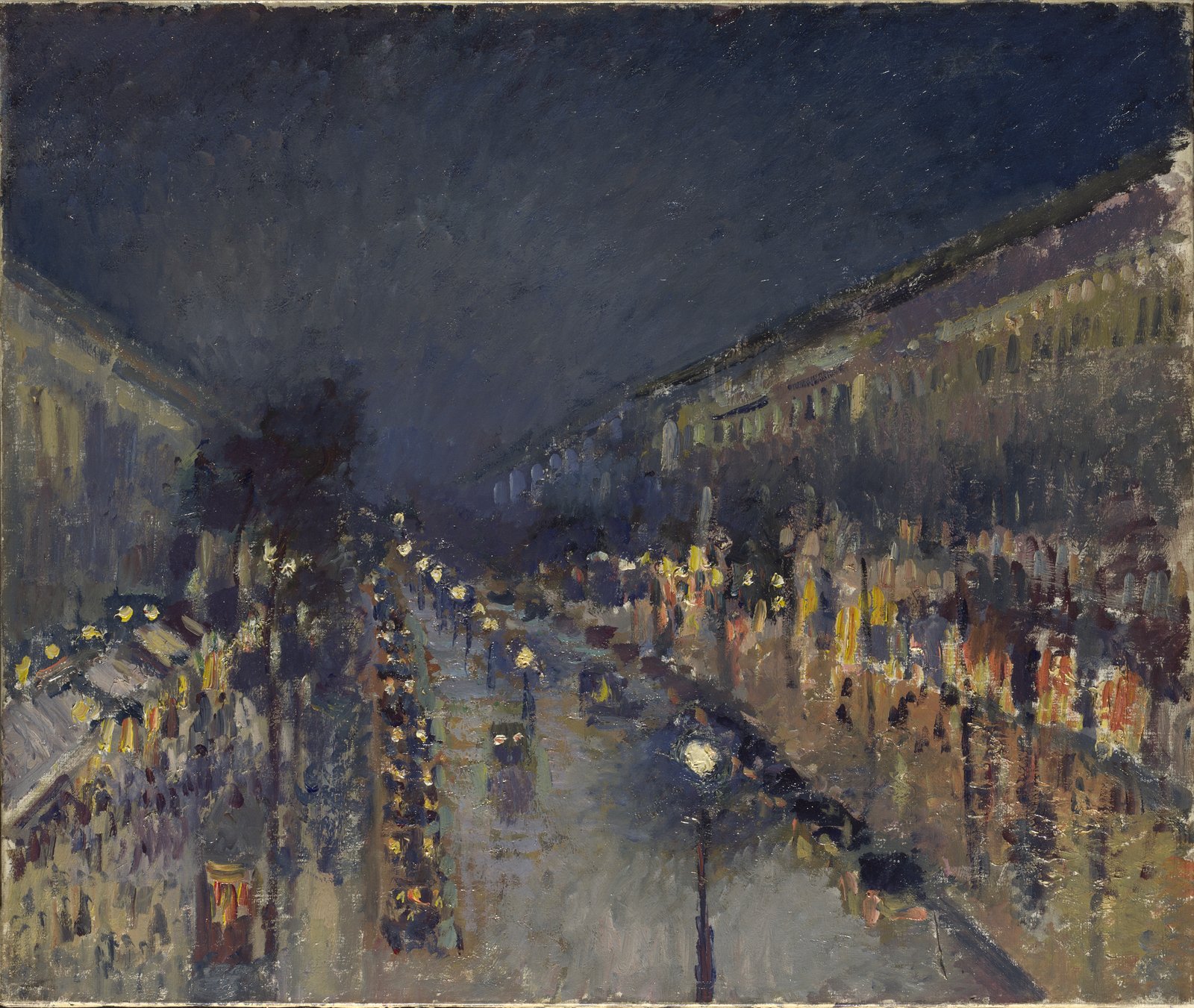
The meteoric career of Georges Seurat (1859–1891) ended with his early death in 1891, aged only 31. In less than a decade he came to dominate the avant-garde, devising innovative painting techniques and a style known as pointillism. Taught by a pupil of the great Neoclassical painter Ingres, Seurat was an accomplished draughtsman. His pictures emphasise mass and volume, with structured, well-defined forms that derive from his academic training.
In Britain, his works were not exhibited until 1910. The acquisition of one of his masterpieces through the Courtauld Fund – Bathers at Asnières – was a pioneering purchase.


The joyful paintings of Pierre-Auguste Renoir (1841–1919) celebrate the pleasures of everyday life. During a career lasting more than 60 years, he produced over 5,000 paintings – vibrant still lifes, enchanting landscapes perceptive portraits and cheerful scenes of conviviality.
Renoir began his working life decorating porcelain, but in the 1860s he studied fine art alongside Monet and Sisley in Paris. At this stage in his career, he considered himself primarily a painter of people and his work was distinctively Impressionist, using small, fragmented brushstrokes to evoke luminosity and vibrancy. But in the 1880s, Renoir moved away from the strong light effects and bright palette associated with Impressionism. His work became more carefully composed, inspired by his study of Old Master paintings and sculpture.
Courtauld’s collection of Renoir paintings included both early Impressionist pictures, which he particularly admired, and the more classical paintings from the artist’s final years.



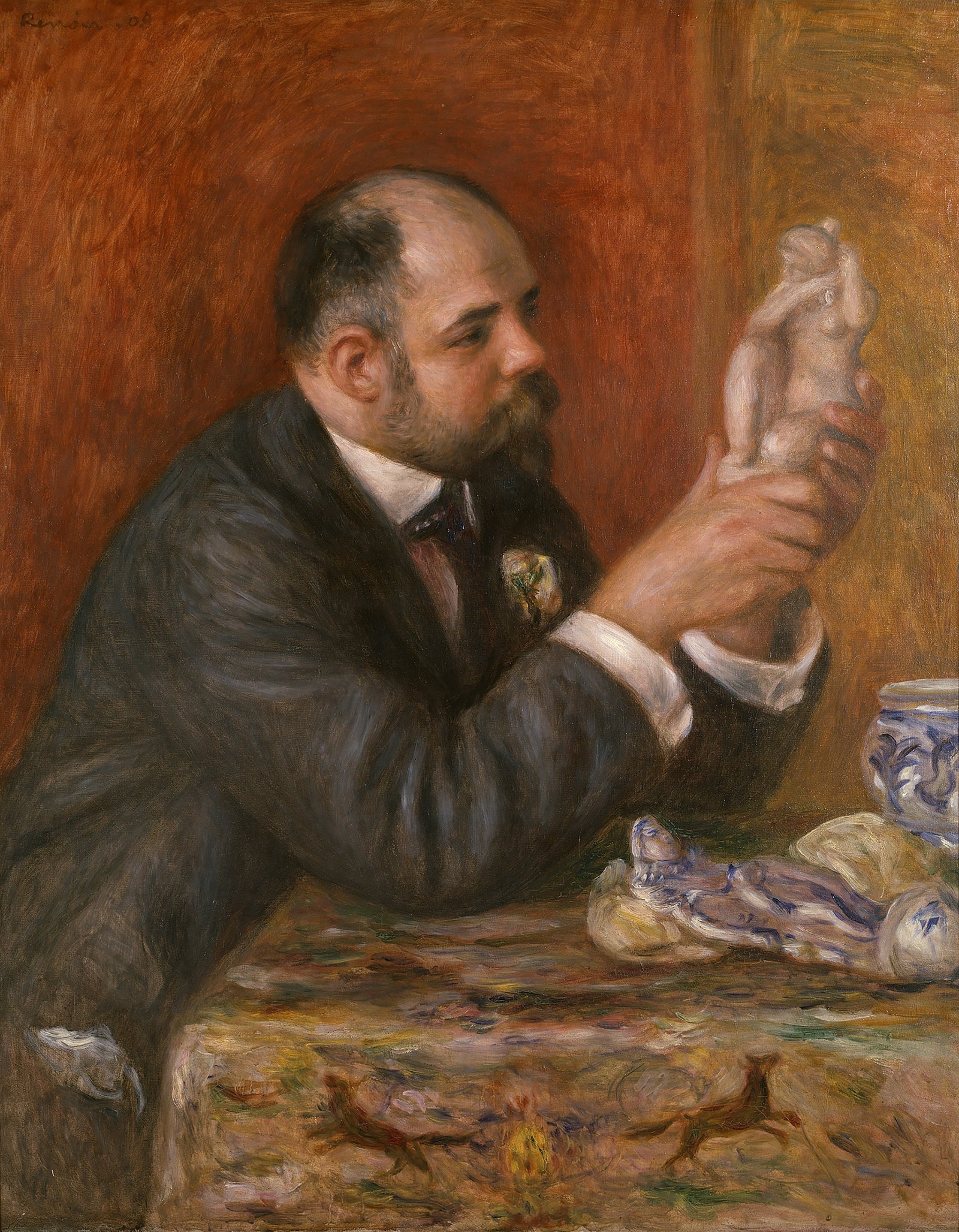
Henri Toulouse-Lautrec (1864-1901) was born into one of France’s oldest aristocratic families, but childhood illness and two accidents excluded him from elite society. After some training with academic painters he settled in Montmartre, an area of Paris known for its bohemian residents and lively lifestyle.
Lautrec’s figures of prostitutes and colourful cabaret performers earned him lasting renown. He captured them with an intensity and truthfulness expressed in bold lines and striking colours. The arresting publicity images he made to advertise new Parisian bars and theatres elevated these posters to the status of high art.
Courtauld admired the ‘fin-de-siècle atmosphere of Toulouse-Lautrec’. The very first modern French artwork that Samuel and Elizabeth Courtauld acquired, in February 1922, was a daring and unconventional drawing by the artist of a woman on a bed.

Paul Cézanne (1839–1906) abandoned his training as a lawyer, despite his father’s objections, to become a painter. He moved to Paris and kept company with the artists Manet, Monet and Pissarro. Under these painters’ influence, his style evolved from dark, thickly painted works to brighter canvases. However, in contrast to his Impressionist peers, Cézanne sought to bring stability to his paintings through slow, methodical brushwork. Misunderstood by most of his contemporaries, he was venerated by later generations as the precursor to a new art.
In Britain, when Courtauld began to collect his work, the reaction to Cézanne was sceptical, prompting fierce debates. Yet the collector amassed a staggering 21 works, as well as drawings and personal letters, spending more money on Cézanne than any other artist. Courtauld’s enthusiasm also ensured that Cézanne’s work entered the national collection for the first time.

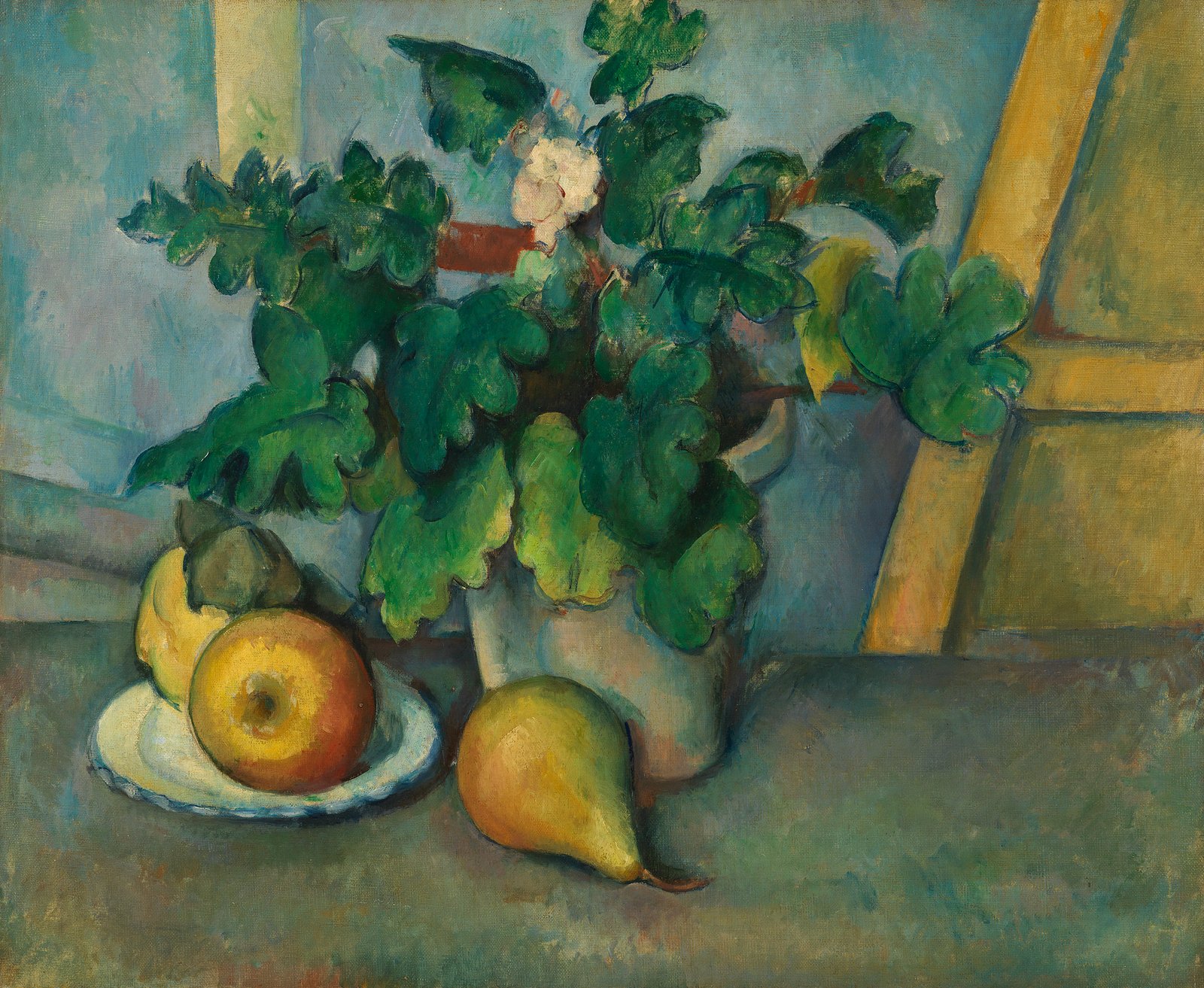



Paul Gauguin (1848–1903) paintings reflect his strong character, and his tumultuous life reads like a work of fiction. After a childhood spent in Peru, he served in the merchant navy and later became a stockbroker. Leaving his job, marriage, family and society he travelled across the globe in search of an unspoilt, ‘primitive’ Eden.
Close to Pissarro, Gauguin exhibited in four of the later Impressionist exhibitions in Paris, before developing his own style, with bold outlines and flat colours, and rejecting three-dimensional recession.
Gauguin’s work appealed to Samuel Courtauld from the outset – his first acquisition of a Post-Impressionist painting was Gauguin’s The Haystacks.

Pierre Bonnard (1867–1947) is best remembered for his images of quiet interiors and radiant gardens. After studying law and working briefly as a barrister, he trained as a painter at the Académie Julian in Paris and in 1888 became a founding member of the Nabis (“Prophets”), an avant-garde group of painters.
His name featured on a list of artists whose work was to be acquired with the Courtauld Fund, alongside other living artists, including Derain, Matisse and Picasso.
Vincent van Gogh (1853–1890) worked as an art dealer in The Hague, London and Paris until 1876. In 1886 he moved back to Paris, where he lived with his brother Theo, and discovered the work of the Impressionists. Under their influence the darker tones of his earlier paintings gave way to brighter colours. These intensified further when he moved to Provence in 1888. This creative period in the south of France ended tragically for Van Gogh who sought treatment in a mental asylum. Back in northern France, he committed suicide aged 37.
Van Gogh’s works were recognised by only a few people in his lifetime, but in the early 20th century his reputation soared. Four paintings were acquired with the Courtauld Fund, including Van Gogh’s Chair and Sunflowers, which Courtauld went to great lengths to secure.
While some art exhibitions are draining, I found this a happy exhibition. The colours are lovely and it’s a real delight to see these masterpieces together. Consider this an introduction to Impressionism and Post-Impressionism. I only wished there was even more to see (but I satisfied that itch by enjoying the rest of the morning admiring stunning paintings in the grand galleries of the National Gallery).
Samuel Courtauld’s philanthropy was extremely generous and his vision helped shaped a public taste for Impressionism in the UK.
Name: Courtauld Impressionists: From Manet to Cézanne
Location: National Gallery, Trafalgar Square, London WC2N 5DN
Dates: 17 September 2018 to 20 January 2019
Tickets: £7.50. Under 12s free (ticket required)
Laura’s London: A Look at the Courtauld Impressionists at The National Gallery – From Manet to Cézanne – Londontopia – The Website for People Who Love London

